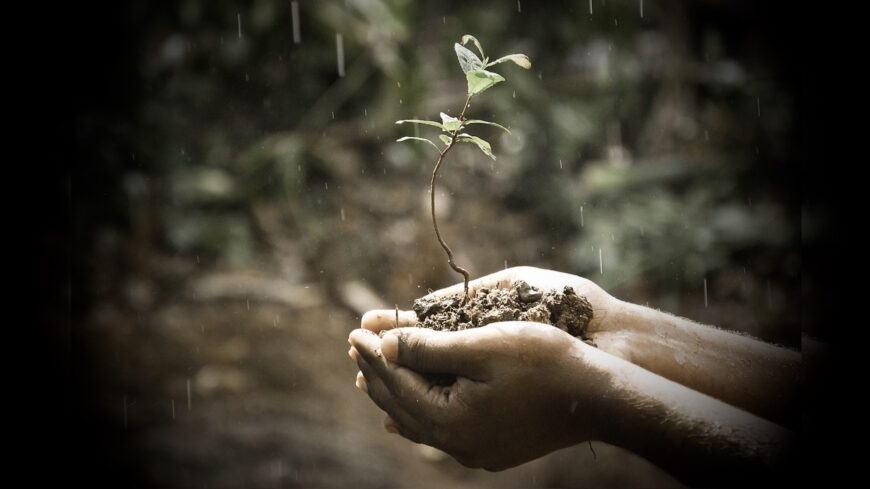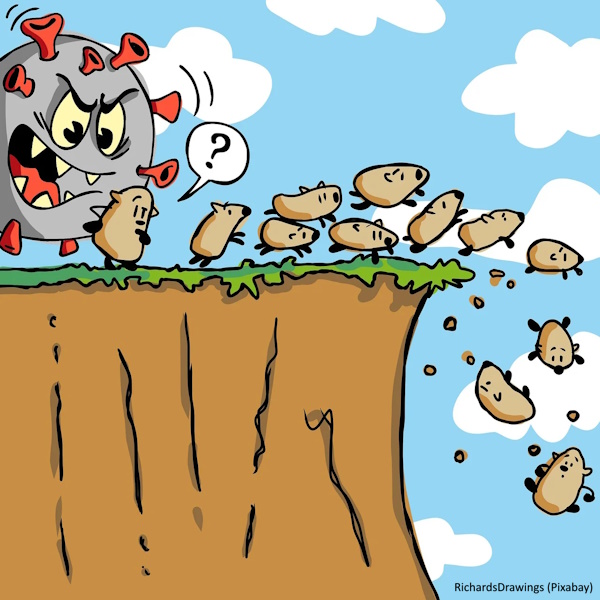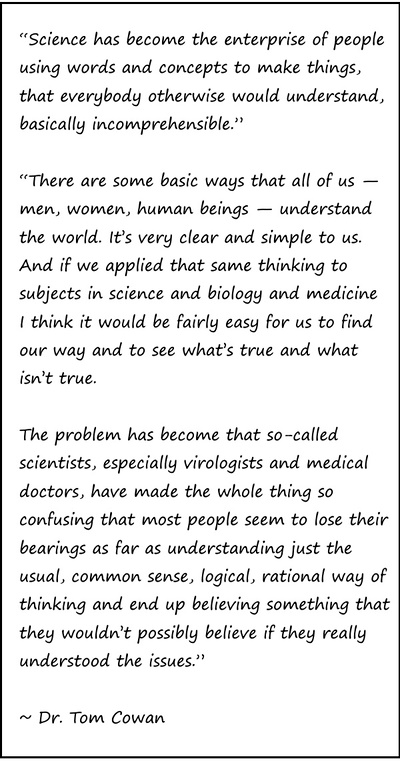
Regenerative Agroecology: The Necessary Solution to Counter ‘Climate Change’
![]()
“The colonizing mentality sees nature as dead matter to be exploited and used. Colonizers do not see self-organisation. They do not see creativity. They just see control and profits while bringing disease and ill health, destroying the land, the soil, and the water.
False solutions, such as synthetic foods, involve a further separation from nature. But the separation between us and nature is the root of the problem.
We are now at a watershed between perpetuating the mechanistic model or choosing to live in harmony with nature and its regenerative and creative capacities. We need to bring life back into the soil. In the micro-organisms of the soil we find the life we cannot see, which is the basis of our health and the solution to the climate problem.
The real solution to the ecological and climate crisis does not lie in creating substitutes for food or expanding the industrial paradigm, but in scaling the initiatives all over the world that are already working on healing our connection with the Earth through care.”
![]()
by Dr. Vandana Shiva, President of Navdanya International
December 12, 2023
The industrial agriculture paradigm, which sees the world as a machine, and not as a self-organized living system, has created devastation on the planet, while contributing significantly to the issue of climate change. Navdanya International’s latest graphic report, ‘Regeneration is Life‘, presented at Cop 28 in Dubai, analyzes the actual causes at the root of climate change and highlights the true regenerative solutions against the false solutions proposed by polluters.
As pointed out in the report, the ecologically destructive practices of industrial agriculture account for 29% of all greenhouse gas emissions (GHG), making the global food system one of the main culprits behind climate change and environmental degradation.
The fertilizer industry is responsible for more than a fifth of total estimated greenhouse gas emissions from agriculture systems worldwide. Factory farms are significant contributors to soil and water pollution. The FAO considers that livestock in CAFOs accounts for 14.5% of global greenhouse gas emissions, while some estimates put the figure above 30%.
Today, the majority of the industrialized and globalized food system is concentrated in the hands of a few companies. Five agrochemical companies hold a 55% monopoly over the $61.5 USD billion world seed market. In 2018, 61% of global seeds and pesticide production was owned by three mega-corporations. Four corporations hold a monopoly over global commodity food trade, and approximately 80% of the US beef market is controlled by only four firms. In 2018, seven firms dominated poultry, pigs, cattle, and aquaculture genetics, and made over $80 billion in sales.
But these very corporations are behind the push for synthetic and lab-made foods, with meat industry giants like Tyson foods, JBS, Cargill, Nestlé, and Maple Leaf Foods have invested up to $2.78 billion, in this new sector. Synthetic and lab-cultured foods are quickly becoming a next means to consolidate even more power and profit into the hands of a few food giants without holding them accountable to the consequences of the system they perpetuate.
The dominant corporate-sponsored narratives are now pushing for the reduction of complex ecological collapse, and climate change, into dualistic narratives around plant versus animal, instead of addressing the larger crisis of how current industrial practices are destroying the Earth’s ecosystems.
Acting as if the world were a machine undermines and ultimately destroys life processes and organic systems. In the European Union, for example, total numbers of all types of farmers fell from 14.4 million to 9.1 million between 2005 to 2020. Meaning that over 5 million small and medium-sized companies have had to shut down. Meanwhile, global biodiversity has decreased by an average of 69% since 1970.
The colonizing mentality sees nature as dead matter to be exploited and used. Colonizers do not see self-organisation. They do not see creativity. They just see control and profits while bringing disease and ill health, destroying the land, the soil, and the water.
False solutions, such as synthetic foods, involve a further separation from nature. But the separation between us and nature is the root of the problem.
We are now at a watershed between perpetuating the mechanistic model or choosing to live in harmony with nature and its regenerative and creative capacities. We need to bring life back into the soil. In the micro-organisms of the soil we find the life we cannot see, which is the basis of our health and the solution to the climate problem.
The real solution to the ecological and climate crisis does not lie in creating substitutes for food or expanding the industrial paradigm, but in scaling the initiatives all over the world that are already working on healing our connection with the Earth through care.
These solutions already exist and are being implemented by local, diverse food communities around the world. Showing us that it is possible to walk a path of living in harmony with nature. We are part of the Earth’s systems, our food is a continuum of health from the ecosystems of the earth. We are deeply and inherently interconnected.
Agroecological systems can improve soil health, reduce erosion and increase resilience against the impacts of climate change through biodiversity conservation.
Agroecology and organic farming also reduce the need for external inputs through integration of agroecosystem, increase crop diversification and soil management. By increasing carbon sequestration, organic agriculture has a lower climate impact than industrial agriculture. Regenerative agroecology, if systemised, has the regenerative potential to reverse the course and serve as an important tool for climate change mitigation.
There are two ways of seeing ourselves and our relationship with the Earth. Either we think of ourselves as separate from Nature or as one with it. It only takes putting a seed in the ground to create this vision. And every additional community that lives ecologically, lives a better life. It is a very exciting time to be alive to regenerate life.
Connect with Navdanya International
Cover image credit: Pexels

Truth Comes to Light highlights writers and video creators who ask the difficult questions while sharing their unique insights and visions.
Everything posted on this site is done in the spirit of conversation. Please do your own research and trust yourself when reading and giving consideration to anything that appears here or anywhere else.










